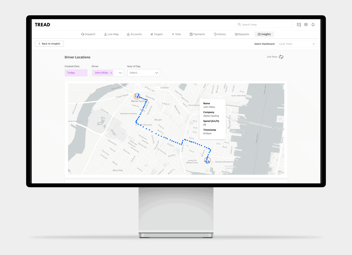Emerging From COVID-19: Construction & the Digital Age
As the world moves carefully towards reopening after the COVID-19 lockdown, there’s a lot at stake for the nearly 7.5 million construction workers employed in the U.S. However, emerging from this crisis also presents the construction industry with many opportunities – new ways to work, new skills and processes, and more effective ways to complete projects.
With what has been observed during the shutdown, there is a better understanding of what steps and tools are helping change the construction industry for the better.
LESSON ONE: AMID SHIFTING RULES, A COORDINATED RESPONSE CAN HELP
Across the U.S., as work was curtailed, the rules about work varied from state to state. In New York, for example, work on hospitals and transportation infrastructure was deemed essential in March, but that was not the case for new residential buildings, in spite of the ongoing shortage of affordable housing. California, meanwhile, sent 99,500 construction workers home, in March alone, while workers in Texas were broadly exempt from shutdown orders during the fight to reopen local economies in the state.
This lack of coordination was not necessarily anyone’s fault. Determining what was essential had to be done quickly by leaders in each state. Fortunately, the construction sector responded quickly.
On April 16, the Occupational Safety and Health Administration introduced a set of COVID-19 safety protocols for sites, promoting safe physical distances, guidelines for working on-site, sharing tools, monitoring health, accepting and delivering materials, and promoting remote interactions to minimize personal contact.
When confronted with the unknown, the difference between success and failure depends upon united efforts. In this case, a coordinated response was the best response.
LESSON TWO: EMERGING TECHNOLOGIES IMPROVE CONSTRUCTION AND PROJECT MANAGEMENT
Protocols are important, but ensuring they’re served in a way that’s both effective and efficient is just as important. This is where emerging technologies that serve the construction industry are key.
Digital solutions were used throughout the sector before COVID-19, but for many family-owned or operated construction companies, going digital was often considered both expensive and time-consuming. With more cost-reducing technologies and proven effectiveness, adoption of these technologies has accelerated. And the necessity of these tools will last long beyond the pandemic.
Contactless and Paperless Operations
Until now, the construction sector relied heavily on paperwork such as invoices, work orders, timesheets and inspection forms to keep track of materials and workflows. In today’s pandemic, nobody wants to touch paperwork that has passed through multiple hands.
More tech adoption is expected from the sector, as companies and regulators see the benefits of digital invoicing and e-ticketing. As everyone recovers from the lockdown, paper on a construction site may disappear.
Adoption of Mobile and Digital Construction Apps
Construction is one of the largest industries on the planet, accounting for more than 10 % of global GDP, and 7% of global employment. From a digitization and research and development perspective, however, construction ranks 20th globally in terms of the degree of research and development and digitization in high tech. Furthermore, a 2016 McKinsey & Co. study estimated that large construction projects are typically completed 80% over budget, and take 20% more time than originally scheduled.
In target driven environments such as infrastructure and building sectors, a shift towards the adoption of more high-tech solutions is needed; using apps, tablets and smartphones instead of clipboards offers a path toward boom. It may be the only way companies will be able to keep up with today’s changing economy. Additionally, suppliers, supervisors and truck drivers alike are discovering how app- and cloud-based services book, track and confirm jobs to keep work moving.
AI and Job Growth
Going digital in construction means more job opportunities as businesses deploy artificial intelligence. Combining predictive and optimization solutions help companies determine where efficiencies exist and AI tools still require people to assess, direct and manage what automated systems generate for highly complicated projects at construction sites.
Studies show that incorporating AI, automation, and robotics will create nearly 60 million more jobs than they will eliminate by 2022 in industries such as aerospace, healthcare, transportation and more and the people needed are high-skilled, higher-paid workers. With unemployment rates skyrocketing, there is a unique opportunity for construction, which has suffered from a lack of skilled workers, to be a “job creator” industry as the economy recovers while also leveraging modern tools to increase efficiency and productivity of its workforce.
FROM LESSONS TO IMPLEMENTATION
As demand for construction resumes and the industry adopts more digital tools, the outcome is safer workplaces, smoother collaboration, easier replication of best practices and better management of inventory and supplies. With agility and efficiency in mind, this culminates in saving the public money, decreasing delays, and ultimately building better houses, schools, hospitals and infrastructure.
Digitization was happening well before COVID-19; it’s now up to the construction sector to take the positive lessons from the crisis and fully embrace the Digital Age.
By Noah Dolgoy, as featured in Construction Executive.
If you’d like to learn more about how Tread can make your business safer and more profitable, reach out to us to book your free demo!
Read On

Five steps to moving forward along the road to digitalization
True digital transformation is a long-term commitment that affects every business sector: from...

The importance of data analytics in construction
It feels like every week there’s a new story on the news about how technology is advancing a...

6 ways companies should utilize construction analytics
Our world has entered a data-driven era and the construction industry is no exception. While...

